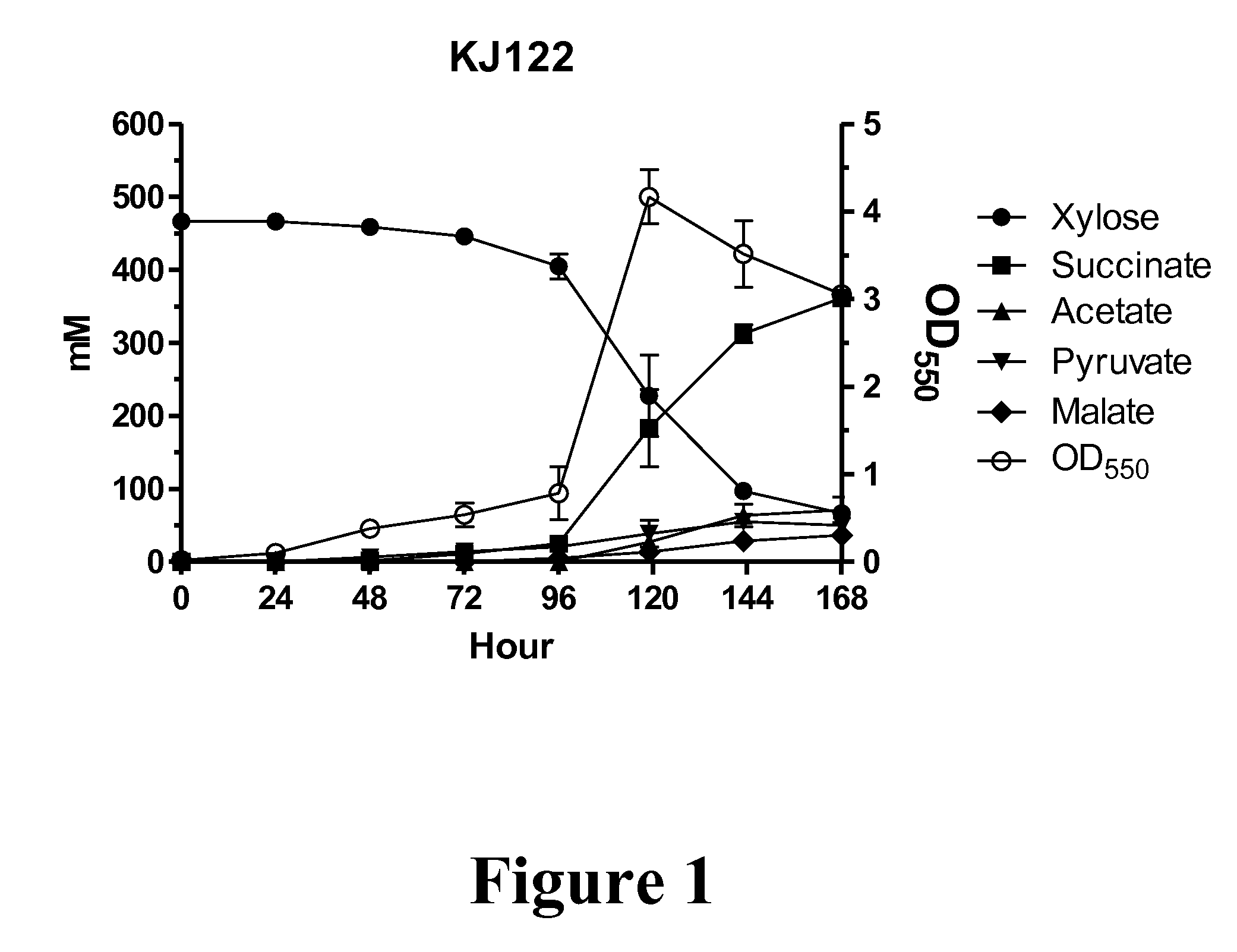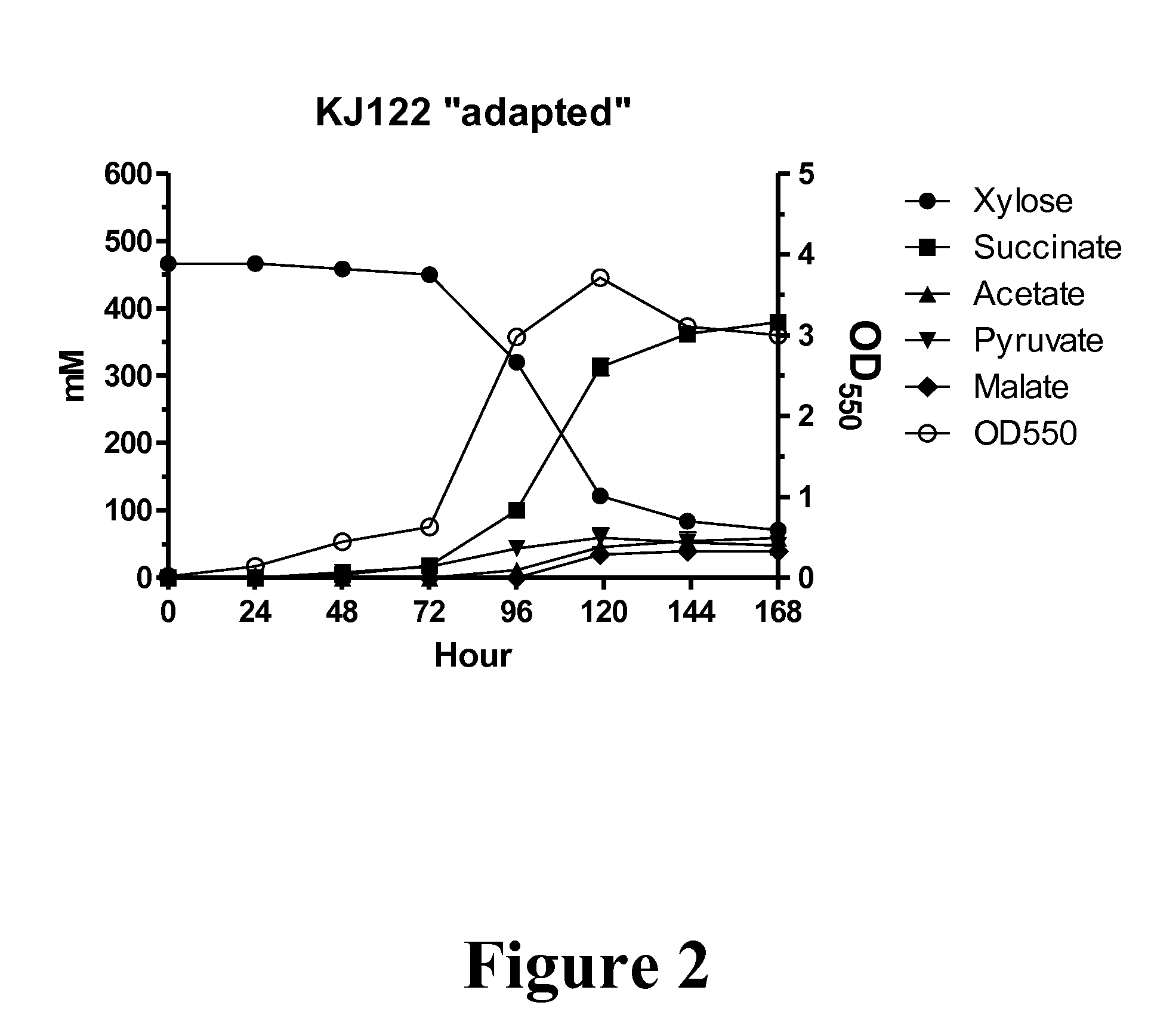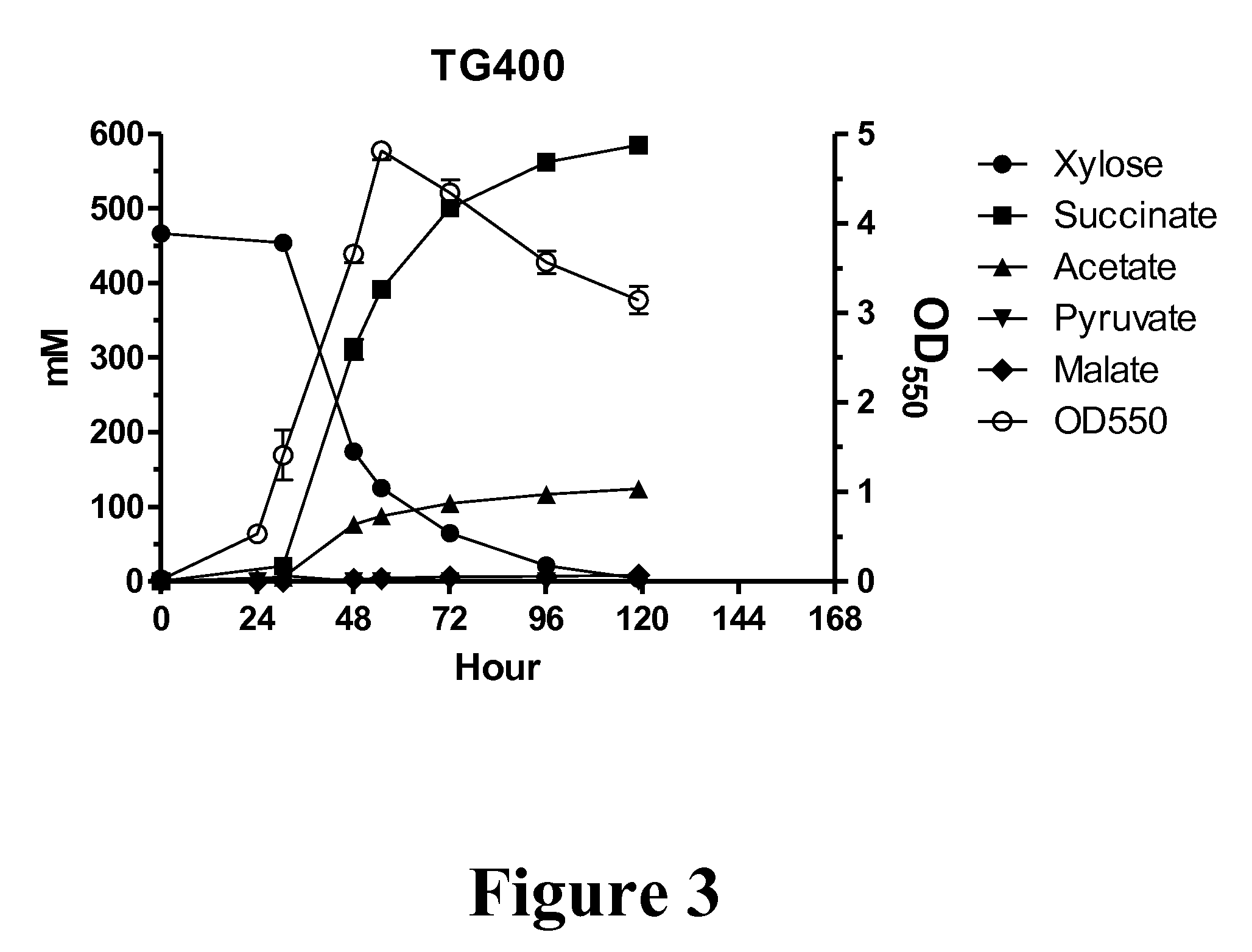Metabolic evolution of Escherichia coli strains that produce organic acids
a technology of organic acids and escherichia coli, which is applied in the field of metabolic evolution of escherichia coli strains that produce organic acids, can solve the problems of high cost of biological fermentation process for producing industrial chemicals, inability of microorganisms to use multiple sugars simultaneously, and high cost of industrial chemicals produced through biological fermentation process. to achieve the effect of reducing the activity of a gene coding
- Summary
- Abstract
- Description
- Claims
- Application Information
AI Technical Summary
Benefits of technology
Problems solved by technology
Method used
Image
Examples
example 1
C5 Utilization
[0101]Escherichia coli strain KJ122 (E. coli C, ΔldhA, ΔadhE, ΔackA, ΔfocA-pflB, ΔmgsA, ΔpoxB, ΔtdcDE, ΔcitF, ΔaspC, ΔsfcA) was able to grow aerobically on glucose, xylose, and arabinose. The objective of the present invention was to grow the KJ122 strain of E. coli microaerobically in a medium containing both hexose and other pentose sugars and to select an organism that is able to use both types of sugars simultaneously.
[0102]Initial screening for C5 utilization was conducted by aerobic growth on NBS mineral medium plates supplemented with 2% of xylose. The plates were incubated at 37° C. overnight. The colonies appearing on the xylose plate were streaked on fresh plates for three consecutive times. At the end of the third transfer on solid NBS mineral medium with 2% xylose, the cells from the plate were scraped off and inoculated directly to a fermentation flask containing AM1 mineral medium supplemented with 0.03 M KHCO3, 1 mM betaine and 8% xylose. The fermentatio...
example 2
Metabolic Evolution of KJ122
[0105]In another embodiment of the present invention, the KJ122 strain was subjected to metabolic evolution. The KJ122 culture growing microaerobically in a liquid AM1 medium supplemented with xylose sugar was transferred to a fresh liquid AM1 medium containing 8% xylose every 24 hours for a period of 2 weeks. At the end of these multiple transfers, the KJ122 strain was transferred to a fresh fermentor with AM1 medium supplemented with 8% xylose. The anaerobic growth rate of KJ122 in the fermentor as well as the succinic acid production and the kinetics of xylose utilization were monitored. The succinic acid production in the fermentor started immediately without any lag period and also produced higher final titers and this strain is referred as a “metabolically evolved strain.” In our strain collection, this metabolically evolved strain has been designated as TG400.
[0106]In order to determine whether the “adapted strain” of KJ122 and the “metabolically e...
example 3
C5+C6 Co-Fermentation
[0109]In KJ122 under anaerobic growth conditions, the C5 and C6 sugars are not simultaneously metabolized. The C6 sugars are generally metabolized first, and a lag is exhibited prior to C5 metabolism. Therefore it was essential to determine the fermentation characteristics of TG400 in the presence of equal amounts of both C6 and C5 sugars. As shown in FIG. 4, TG400 was able to use glucose and xylose at the same rate and produced succinic acid without any lag period. KJ122 was also able to use both xylose and glucose. However in the KJ122 strain, the xylose utilization started only after a substantial decrease in the glucose concentration. Further as shown in Table 3, TG400 used more xylose on a molar basis than glucose when compared to the xylose and glucose utilization by KJ122.
PUM
| Property | Measurement | Unit |
|---|---|---|
| volume | aaaaa | aaaaa |
| pH | aaaaa | aaaaa |
| flow rate | aaaaa | aaaaa |
Abstract
Description
Claims
Application Information
 Login to View More
Login to View More - R&D
- Intellectual Property
- Life Sciences
- Materials
- Tech Scout
- Unparalleled Data Quality
- Higher Quality Content
- 60% Fewer Hallucinations
Browse by: Latest US Patents, China's latest patents, Technical Efficacy Thesaurus, Application Domain, Technology Topic, Popular Technical Reports.
© 2025 PatSnap. All rights reserved.Legal|Privacy policy|Modern Slavery Act Transparency Statement|Sitemap|About US| Contact US: help@patsnap.com



